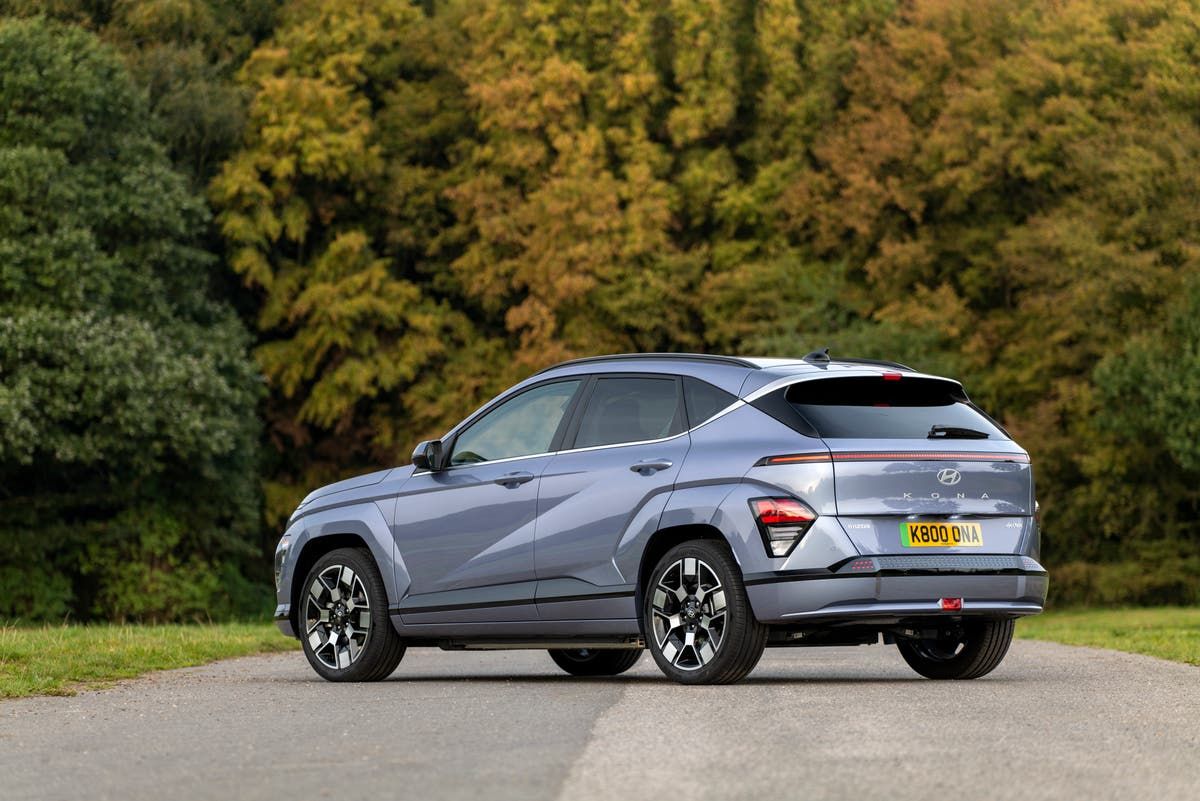tThe Hyundai Kona is a mid-size crossover SUV that is advanced, should prove reliable and an immensely charming car, doing everything the family transport should do.
In fact, this is considerable praise, because creating such a vehicle is one of the biggest design and engineering challenges on the planet. The fact that we take the quality and performance of our cars for granted doesn't change that fact.
The interior is a great mix of no-nonsense high-tech and old-school comfort.
(Hyundai)
The Kona's achievement is even more impressive because it applies to all versions of the model, which are many. Basic versions have a smaller (1-litre) petrol engine, a six-speed manual gearbox and in the lowest trim level (“Advance”) can be had for around £25,000.
Hybrids cost around £30,000 and are more suitable for higher mileage users, given their premium, while fully electric battery versions can cost around £45,000 and are as up to date as you can get. unassisted parking and the reasonable expectation of a 300-mile range on a single charge.
There is easy access to infotainment, navigation and smartphone mirroring.
(Hyundai)
However, keep in mind that that probably class-leading range is found in the one with the largest battery, and the downside is that it will take nine or ten hours to fully “fill up” on a home charger, but much less on a commercial shipper. fast charger.
Being a larger and heavier car, it is also less efficient than its smaller, battery-powered predecessor. Interestingly, it would take 33 hours, or a day and a half, to charge it from a three-prong household socket; Compare it with your laptop or phone to understand the battery size.
Fortunately, manufacturers no longer cram everything into a tablet-style touchscreen.
(Hyundai)
In light of the negative publicity about electric cars that seems so trendy right now, I must immediately add a couple of caveats about the electric Kona.
Rishi Sunak's failed attempt to delay the switch to electric cars until 2035, while continuing to force car companies to produce a certain proportion of BEVs (battery electric vehicles) under threat of financial sanctions, has created a market distortion: too much offer and too little. demand for the current generation of new and pre-owned electric models.
THE SPECIFICATION
Hyundai Kona Electric Ultimate Lux Package
Price: £44,695 (as tested, petrol starts at £25,725)
Propulsion: Individual electric motors, powered by a 65.4 kWh battery.
Power (PS): 218
Maximum speed (mph): 107
0-60 (seconds): 7.8
Economy (miles per kWh): 2.4
Range (miles): 250-320
CO2 emissions: 0
Therefore, there are bargains to be had from the current market imbalance. In the case of the new Kona, that has the added advantage that stocks of the recently retired version, perfectly good by the way, although a little less advanced, are also running out.
Therefore, the official list prices of BEVs can generally be a poor guide to the actual deals on offer. The outgoing Kona electric, by the way, is smaller and lighter than the new one, which means lower range but better fuel economy.
The Kona's 'drive mode' easily changes the driving style between normal, eco and sport
(Hyundai)
All new Konas have similar styling, and that means it's not for everyone's tastes. The large scar-shaped groove along the side is reminiscent of the larger Ioniq 5, where this style from the house of Hyundai was first tested.
But while the Ioniq 5 has exquisitely well-proportioned lines reminiscent of Giugiaro's original VW Golf (50 years this month!), the Kona's are more avant-garde and modernist to the point of being random. It's still quite nice, at least to my eyes, and is an evolution of the older, more conservative Kona, but I can appreciate that it won't win any beauty contests.
It will take almost 10 hours to 'recharge' at home, but much less with a commercial fast charger
(Hyundai)
People should be much happier with the interior, which is a great mix of no-nonsense high-tech and old-school comfort. By which I mean that it has a large dual-aspect touchscreen, incorporating dials along with a variety of suitable dials and buttons.
More and more manufacturers are bucking the trend of packing everything into a tablet-style touchscreen, which is good news for both convenience and security. Plus, you get steering wheel controls and some voice commands on the more expensive versions. Everything works extremely well.
New rear bench design gives the sensation of a more spacious cabin
(Hyundai)
There is more space inside than the previous model, all the materials are top quality and the beast feels as robust as it looks.
The Hyundai-Kia group has set out to make its batteries as efficient as possible, bringing realistic range to over 200 miles in its mid-range Konas and Niros, even on a cold day on the motorway, but without undue sacrifices. of passenger space and added weight. As a package, it is technologically superior to the standard hybrid version and, of course, is almost silent in use.
As the new Kona is larger than its predecessor, trunk space is now even greater
(Hyundai)
More enthusiastic drivers will find the hybrid version particularly unsatisfying, but now that's what the Kona is all about. There could be a high-performance “N” version, as with other Hyundai models, which can compete with, for example, Ford's Puma ST. But for now it is strictly family transportation.
So the Kona is bigger, improved, and one of the best options in an increasingly crowded market segment. Broadly speaking, its main competitors are the Jeep Avenger, the (closely related) Kia Niro and the Volvo XC40, which also come with a rich variety of powertrains. Just remember not to be put off by the list price and take some time to shop around for the best values.












